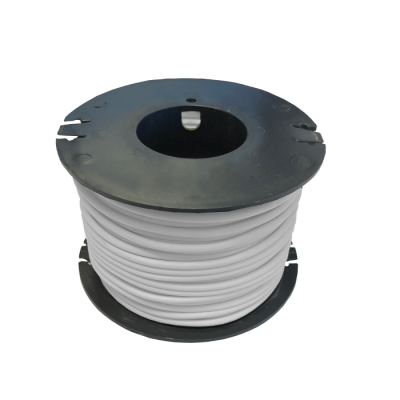When it comes to decorating or renovating your space, one of the most impactful decisions you’ll make is selecting the right colour and finish for your wall cladding. PVC wall cladding is a versatile and practical option for both interior and exterior surfaces, offering a wide array of choices in terms of colour, texture, and style. The right combination can completely transform the look and feel of a room or building, while also enhancing the functionality of the space.
In this post, we’ll guide you through the essential factors to consider when choosing the ideal colour and finish for your PVC wall cladding, ensuring that your walls not only look stunning but also complement the overall design of your space.
1. Consider the Purpose of the Space
The first step in selecting the right colour and finish for your PVC wall cladding is to consider the functionality and purpose of the space. Different environments have different needs, and your choice should reflect that.
- Living spaces (homes and offices): For interior cladding in living rooms, bedrooms, or offices, lighter colours like soft whites, greys, or pastel tones can help create a calming, spacious atmosphere. If you’re aiming for a modern or minimalist look, matte finishes in neutral shades work particularly well. Alternatively, for a warmer feel, wood-effect PVC panels are a popular choice, giving the room a more natural, earthy tone.
- Commercial spaces: For offices, retail outlets, or restaurants, you might want to opt for bold colours that can create a striking impression or establish brand identity. PVC cladding in dark colours such as navy blue, charcoal grey, or black is perfect for creating a sophisticated, professional look. Meanwhile, a gloss finish can add a polished, high-end touch.
- Wet or high-moisture areas (bathrooms, kitchens, etc.): In areas exposed to moisture, such as bathrooms or kitchens, light and reflective finishes are practical choices. White, cream, or pale grey colours are ideal, as they reflect light and help create a clean, airy feeling. Glossy or semi-gloss finishes are particularly effective here, as they are not only easy to clean but also reflect light, making the space appear larger and brighter.
2. Match the Cladding to Your Existing Décor
Once you’ve established the purpose of the space, consider how the colour and finish of the PVC wall cladding will complement your existing décor. Think about the colour scheme of the room, including the furniture, flooring, and any existing wall treatments.
- Neutral colours: If your room is filled with vibrant or patterned furniture, art, or accessories, neutral shades like white, grey, or beige are a safe bet. These colours will allow other elements of the room to stand out without overwhelming the space.
- Bold colours and patterns: If you want the cladding to be a statement feature, don’t shy away from rich, saturated hues like deep blues, greens, or even metallic tones. Darker colours can create a dramatic effect, especially when paired with a gloss finish that catches the light and adds dimension to the space.
- Texture and finish: The texture of the cladding can also influence how it integrates with your existing décor. Textured finishes, such as embossed wood grain or stone-effect PVC, can add a tactile dimension to the room, which works well in spaces that require more warmth or character. Conversely, smooth finishes are often better suited to more contemporary, minimalist settings where clean lines and simplicity are the focus.
3. Think About Lighting
Lighting plays a crucial role in how colours and finishes are perceived. A colour that looks perfect in daylight may appear very different under artificial lighting. It’s important to think about both natural and artificial light sources when selecting your cladding.
- Natural light: Rooms with plenty of natural light benefit from lighter shades, which help reflect the light and keep the space feeling airy and open. Pale colours like white, ivory, or light grey can help maximise natural light and prevent the space from feeling too dark.
- Artificial lighting: For spaces with limited natural light, warmer colours such as soft taupes, beige, or light wood effects can create a welcoming, cosy feel. On the other hand, if you want to create a cool, modern aesthetic, consider using cool tones such as grey, silver, or even black, especially in spaces with warm-toned lighting.
- Glossy finishes tend to reflect light, making them perfect for rooms with little natural light. They can add a sense of brightness and depth. Matte finishes, however, absorb light, which can be perfect for creating a more subdued, intimate atmosphere in spaces with abundant light.
4. Consider the Size of the Space
The size and shape of the space will also affect how you should choose the colour and finish of your PVC wall cladding. Small rooms, for example, can benefit from lighter colours that make the space feel more expansive. Lighter tones like off-white, cream, or pale pastels can help reflect light and make a room feel larger.
- Large spaces can handle darker or more dramatic colours without feeling cramped. If you’re working with a large commercial space or an expansive living room, you may want to experiment with darker tones or more textured finishes, which can create a sense of depth and intimacy.
- Vertical versus horizontal application: If you’re installing the cladding on vertical surfaces (like walls), consider using light colours to make the room feel taller. On the other hand, horizontal cladding can help make a room feel more expansive, and darker tones in horizontal strips can add a sense of sophistication and warmth.
5. Durability and Maintenance
Some finishes are more durable and easier to maintain than others. In high-traffic areas, durability should be a key consideration. Glossy finishes tend to show fewer signs of wear and tear than matte finishes, which can show fingerprints and stains more easily.
- Gloss finishes are ideal for areas that need to be cleaned frequently, such as kitchens, bathrooms, or commercial spaces, as they are easy to wipe down and maintain.
- Matte or satin finishes are excellent for residential applications where you may prefer a more understated, natural look, but they may require a little more effort to keep clean, especially in areas where food, water, or grease might come into contact with the walls.
6. Budget Considerations
When choosing both the colour and finish of your PVC wall cladding, budget is always a crucial factor. While PVC cladding is generally cost-effective, certain finishes, such as high-gloss or textured options, may come at a slightly higher price. Consider how much you’re willing to spend, and try to balance between aesthetics and functionality. Keep in mind that while textured finishes can create a more luxurious look, they may require a slightly larger investment.
Choosing the right colour and finish for your PVC wall cladding can significantly impact the look and feel of a room or building. By considering the purpose of the space, how the cladding will complement existing décor, lighting, and maintenance needs, you can ensure that your PVC cladding enhances both the aesthetics and functionality of your space.
Whether you’re looking for a sleek, modern look, a rustic charm, or something more vibrant and bold, PVC cladding offers a wide range of options that cater to every style and practical requirement. With careful thought and planning, you can select the perfect colour and finish that will transform your walls into a striking feature of your design.


































